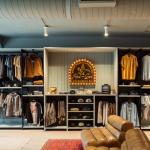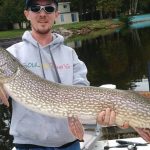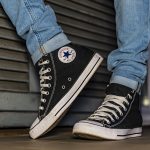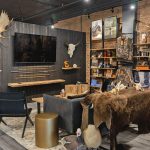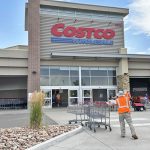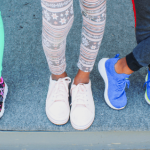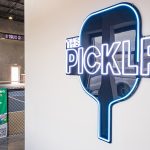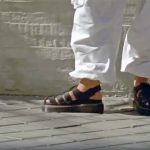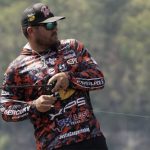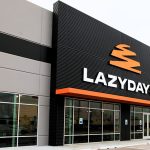Industry vendors again looked to acquisition to help boost sales and earnings growth for the fourth quarter, but retailers had a hard time keeping pace with the sales growth seen at their vendors. Retail is still clearly in the drivers seat here as profit growth in the retail sector outpaced sales growth by more than a two-to one margin, while vendor profit growth was at about half the rate of their sales gains.
Benefits from foreign exchange rates also pushed vendor sales and earnings higher for the period as the weaker dollar continued to make U.S. companies look better, while many European companies struggled to keep pace with the FX rate-aided growth posted by their U.S. counterparts.
The B.O.S.S. Report presents an overview of fourth quarter industry results in the chart on page two. Results are posted for those companies that have reported for the period ended closest to the end of December. Because the report is not a clear picture of the entire industry, BOSS feels the total numbers are less significant than the trending information provided in the percentage increases and decreases.
Total sales increased 20.4% in the fourth quarter for the vendor companies tracked in this report, while net income rose 9.9% for the period, the results here are in sharp contrast to the total sporting goods industry vendor report produced by Sports Executive Weekly, a sister publication to BOSS. In the broader industry, profit growth outpaced sales growth by a two-to-one margin. Return on Sales, which is the measure of net income as a percentage of sales, declined 90 basis points for the quarter versus the year-ago period, coming in at 8.6% of sales versus 9.5% in Q4 last year. The ROS number in the BOSS Specialty end of the business was a full 300 basis points higher than the broader sporting goods industry results. For the fourth quarter, the gross margin for the reporting vendor companies averaged 41.7% of sales for the quarter, up 80 basis points from 40.9% of sales in the year-ago period, again about 200 basis points better than the broader market.
The honors for most organic growth in the Softgoods sector again goes to Deckers, which saw sales grow 108% in the quarter as the company continued to reap nice upside from the Ugg boot phenomenon while taking full advantage of its acquisition of the Teva brand. VF Corp. saw its Outdoor Coalition, which includes The North Face, Jansport, and Eastpak in their ongoing businesses, post a 21% increase in organic sales growth for the period, with The North Face posting a 26% increase in the U.S., while the International business surged 48% in Q4. Columbia also posted double-digit organic sales growth in the quarter as they cut deals to move excess inventory before year-end. Margins obviously took a hit, but better controls elsewhere helped the company post strong double-digit profit growth, resulting in a strong 13.0% Return on Sales. Phoenix was the only other softgoods company to post double-digit sales growth, with sales increasing 12.9% in the ongoing businesses.
Excluding acquisition-aided growth at Phoenix and VF Corp., the softgoods business increased 14.3% for the quarter. Apparel outpaced footwear as Outdoor footwear sales for the reporting companies rose just 12.5% for the period.
Columbias margin decline, along with sharp decreases in GM at Phoenix Footwear (-745 bps) and Rocky Shoes & Boots (-430 bps), helped push the softgoods sector gross margins down for the quarter, contracting 30 basis points versus the year-ago period to 42.6% of sales. Strong margin gains at Lacrosse (+495 bps), and to a lesser extent, Timberland, Deckers, and Wolverine, were overwhelmed by the sharp declines elsewhere in the sector.
Phoenixs margins took a hit due to increased military orders that also delivered about $5.7 million in incremental business versus the year-ago period. Sales in the rest of the business actually declined 5.6% for the quarter.
In Hardgoods, the honors for highest sales growth again went to K2 Inc., with acquisition-aided growth of 74.5% for the period. KTO would have had just an 9.0% increase in sales for the quarter excluding its various deals over the last year.
The SnowSports segment posted the largest gain, again due to the K2 Inc. acquisitions of Volkl and Marker that resulted in a 130% sales increase in the K2 Action Sports business that houses the Winter Sports brands. Excluding K2, the SnowSports segment saw sales increase 8.7% for the period, with Atomic increasing 11.8%, Head Winter Sports gaining 17.5%, and Salomon declining 5.6% for the period. Rossignol, which is in the process of being acquired by Quiksilver, Inc., saw fiscal Q3 sales dip 1.1% for the period.
In the retail sector, the impact of Garts acquisition of The Sports Authority and Dicks Sporting Goods acquisition of Galyans impacted the numbers less than in quarters past. While DKS pro forma sales numbers are included in the chart and TSA is in anniversary mode, both Dicks and TSA saw integration costs impact their profit numbers for the quarter; Dicks in the 2004 quarter and TSA in the 2003 quarter.
Excluding the merger integration costs at DKS in Q4, their net income would have increased roughly 22% to $43.4 million. Excluding TSAs costs for the year-ago period, net income would have been down 9.7% for the period. Excluding the costs in both quarters for the two retailers, the total retail net income line would have been up 14.8% for the quarter and ROS would have been 6.0% of sales, up 30 basis points from the fiscal 2003 quarter.
Sales in the Hunt/Fish/Camp segment outpaced the retail group as a whole, growing 12% for the quarter, but profit growth at the H/F/C guys lagged the broader retail space, growing 18.3% for the period.

